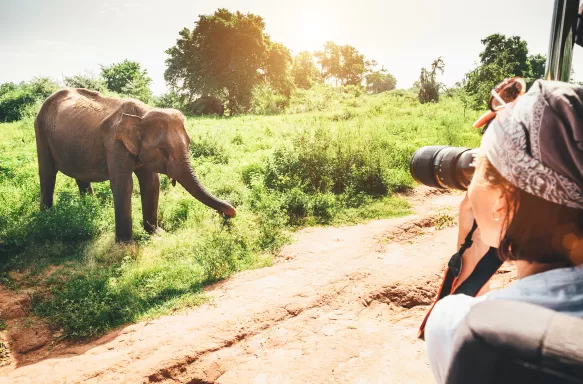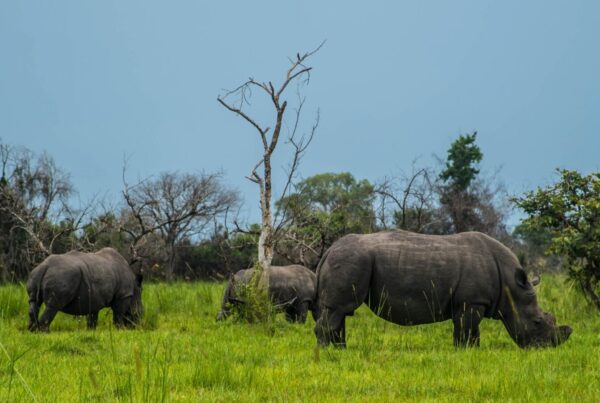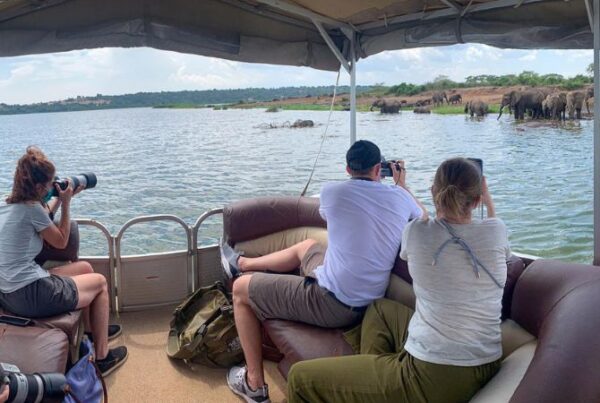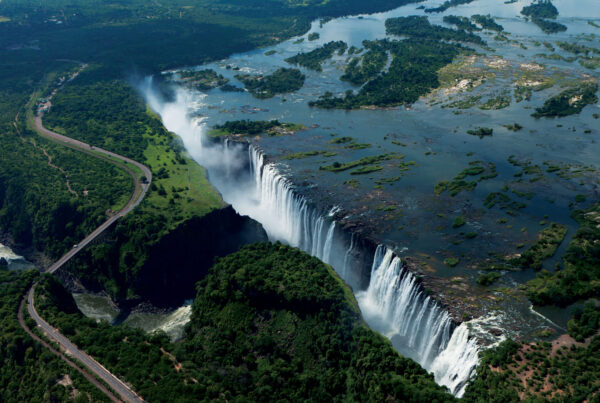Weekend Itinerary: Fort Portal Wildlife Photography Tips for Families
Capturing Memories in the Pearl of Africa
In the lush highlands of western Uganda, Fort Portal stands as a jewel of beauty and adventure, renowned for its verdant landscapes, captivating wildlife, and breathtaking views of the Rwenzori Mountains. For families who cherish travel, the town offers far more than scenic charm; it is a gateway to wildlife-rich reserves and cultural encounters that promise unforgettable moments. When approached with a camera in hand, a weekend in Fort Portal becomes not only an excursion but a creative journey where memories are preserved through the art of photography.
Wildlife photography here is not restricted to professionals. Families with varying levels of experience are welcomed into a setting where curiosity and patience are rewarded. The itinerary is crafted to guide families through a balanced blend of exploration, relaxation, and practical photography tips that ensure each moment is transformed into a timeless image.
Day 1: Arrival and Introduction to Fort Portal
The weekend itinerary begins with the family’s arrival in Fort Portal, a town often described as the cleanest and most serene in Uganda. Surrounded by crater lakes, tea plantations, and rolling hills, the journey to Fort Portal is itself a photographic opportunity, with roadside markets, children playing in villages, and expansive greenery framing the route. Families are encouraged to settle into accommodations that blend comfort with proximity to nature, setting the stage for an immersive experience.
The first afternoon is best spent exploring the town’s vibrant atmosphere. Markets filled with colorful produce, crafts, and traditional attire provide both cultural encounters and photographic inspiration. Families are encouraged to capture candid moments of daily life, practicing composition and lighting techniques in less demanding conditions before venturing into wildlife reserves. As evening descends, the setting sun behind the Rwenzori Mountains creates a dramatic canvas, ideal for experimenting with silhouettes and golden-hour photography.
Day 2 Morning: Wildlife Exploration in Kibale National Park
The second day brings the heart of the itinerary—a family wildlife adventure in Kibale National Park, located just outside Fort Portal. The park is celebrated for its population of chimpanzees, alongside colobus monkeys, red-tailed monkeys, and countless bird species. For families, this environment offers both adventure and learning opportunities, as rangers guide them through dense forests while explaining the behaviors and habitats of its inhabitants.
Wildlife photography in Kibale requires patience and attentiveness. Families are advised to maintain quiet observation, allowing animals to behave naturally while adjusting camera settings to capture movement under the dim forest canopy. Children can be introduced to simple tips such as steadying hands, focusing on the eyes of the subject, and appreciating the interplay between light and shadow. The challenge of photographing chimpanzees as they swing through trees becomes a thrilling game that both adults and children can enjoy, each click of the shutter preserving a fleeting moment of energy and grace.
Day 2 Afternoon: Birding and Landscape Photography
As the family exits Kibale, the afternoon presents opportunities for bird photography and wide-angle shots of crater lakes and surrounding landscapes. The Fort Portal region is known as a paradise for birders, with species such as the great blue turaco, African grey parrot, and sunbirds frequently sighted. Capturing birds requires patience, yet families often find joy in waiting together, watching quietly as colors flash between branches. The act of birding becomes both a recreational activity and a lesson in attentiveness for children, reinforcing the value of observation in photography and life.
The crater lakes, with their mirror-like reflections of surrounding hills, provide opportunities for landscape photography. Families can experiment with framing foreground elements, such as flowers or trees, to add depth to their images. These sessions not only improve photographic skills but also encourage families to see the landscape as more than scenery—it becomes a canvas of shapes, textures, and contrasts waiting to be preserved.
Day 2 Evening: Cultural Experiences and Low-Light Photography
Evenings in Fort Portal often bring cultural performances and culinary experiences. Traditional music and dance provide lively scenes where families can practice capturing motion in low-light conditions. The vibrancy of costumes and the energy of drumming create images that burst with color and rhythm. For children learning photography, this is a chance to understand how slower shutter speeds or higher ISO settings can preserve moments of movement without losing the essence of the scene.
Dinner, often prepared with local ingredients such as matoke, groundnut sauce, and fresh tilapia, becomes another opportunity to practice photography before eating. Families can document meals together, preserving not only the taste of the food but the shared joy of dining in a new cultural context. These simple, shared acts of photographing and reflecting elevate the evening from a routine to an artistic and communal moment.
Day 3 Morning: Safari Adventure in Semuliki National Park
The third day of the itinerary introduces families to Semuliki National Park, accessible from Fort Portal and famed for its diverse ecosystems and unique wildlife. The game drive through Semuliki offers sightings of elephants, buffalo, and smaller mammals, alongside countless bird species and butterflies. This is a moment where families can practice long-range photography, using zoom lenses to capture animals at a respectful distance.
The open landscapes and savannah-like environments create natural lighting conditions that are more forgiving than the forest, making it easier for children and beginners to capture sharp, vibrant images. Tips such as framing animals against the horizon, waiting for natural behavior, and using the rule of thirds are introduced during these drives, turning the safari into both an adventure and a photography workshop.
Day 3 Afternoon: Hot Springs and Final Reflections
After the game drive, a visit to Sempaya Hot Springs offers a different photographic challenge. The steaming pools and bubbling water provide dramatic imagery, with mist rising against the backdrop of forested hills. Families often experiment with macro photography here, focusing on textures, colors, and close-up details. The springs also serve as a place of cultural significance, with stories shared by guides about their role in local traditions. Capturing these moments blends natural wonders with cultural storytelling, ensuring that the family’s photo album reflects the full depth of their experience.
As the afternoon fades, families are encouraged to review their photographs together, reflecting on their favorite images and the stories behind them. This collective reflection transforms the weekend into more than a trip; it becomes a narrative of shared learning, discovery, and creativity.
Practical Photography Insights for Families
Photography in Fort Portal is most rewarding when approached with patience and mindfulness. Families are advised to focus on storytelling rather than perfection, capturing not only wildlife but also the emotions, interactions, and candid expressions that define the trip. Simple techniques, such as using natural light effectively, keeping cameras steady, and waiting for subjects to move naturally, allow even beginners to produce meaningful images. For children, the emphasis on storytelling rather than technical precision ensures that photography remains fun and accessible.
Photography also becomes a tool for bonding. Parents and children can compare images, share tips, and encourage one another, turning the act of documenting into an act of connection. The camera thus becomes more than an instrument; it becomes a medium through which families communicate, reflect, and create lasting memories.
The Transformative Role of Photography in Family Travel
A weekend in Fort Portal demonstrates that photography is not merely about images but about perspective. By viewing wildlife, landscapes, and culture through the lens of a camera, families are encouraged to slow down, observe more deeply, and appreciate the subtleties of the world around them. Each photograph becomes a moment of mindfulness, a pause in time that preserves both the beauty of Uganda and the emotions of the family members who experienced it.
The act of photography enriches the journey, turning every walk, drive, and meal into an opportunity for creativity and expression. For children, it fosters attentiveness and patience; for parents, it offers reflection and artistic fulfillment. Together, these elements transform the trip into a family experience that is remembered not only in memory but also in tangible images that can be shared for years to come.
Begin Your Family Adventure with WildHorn Africa
The Weekend Itinerary in Fort Portal offers families an unforgettable combination of wildlife, culture, and photography. From the forests of Kibale to the crater lakes and the savannah of Semuliki, each moment provides opportunities for discovery and artistic expression. Families return home not only with photographs but with stories, skills, and connections that extend the impact of the journey beyond its duration.
To ensure that these experiences are seamless, safe, and enriching, it is highly recommended to book tours and safaris with WildHorn Africa. Their expertise in designing family-friendly itineraries, combined with professional guidance in both wildlife and cultural encounters, guarantees that every family adventure in Fort Portal becomes a celebration of togetherness, creativity, and the timeless beauty of Uganda.





 WildHorn Africa – Authentic and unforgettable tours across Africa, guided by local experts who know the land, wildlife, and culture best.
WildHorn Africa – Authentic and unforgettable tours across Africa, guided by local experts who know the land, wildlife, and culture best.


